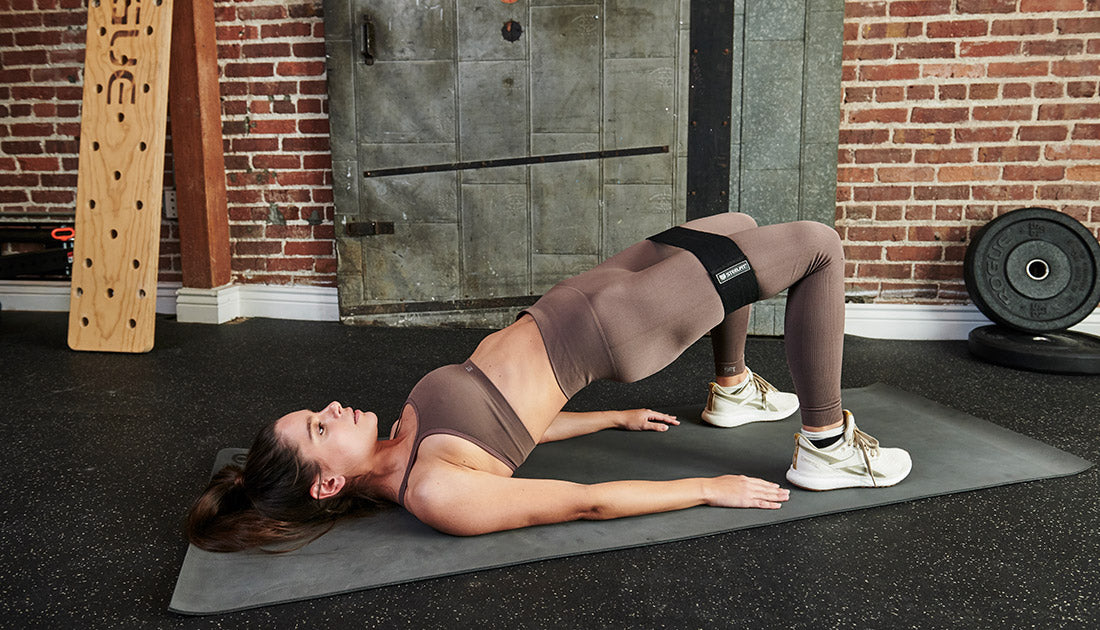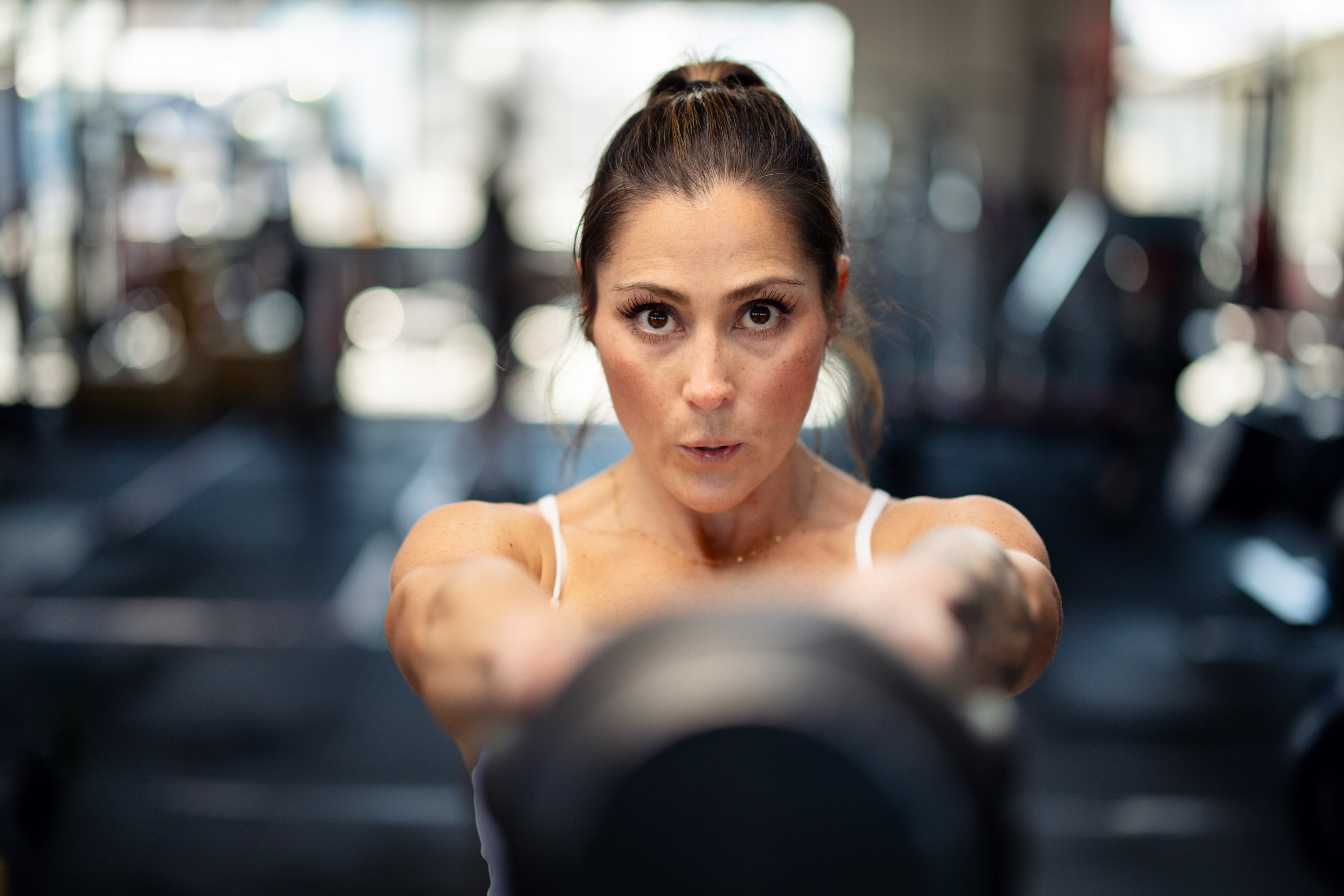Building a bigger backside isn’t just about aesthetics. The booty acts as this power pack that increases your performance in countless other ways helping you run faster, jump higher, and lift more weight.
If you’re looking to make those #bootygains, then this is the article for you!
Ahead, we’ve got the best exercises to lift, tone, tighten and define the shape of your booty, to make it bigger and better than ever this year!
The 7 Best Exercises to Make Your Butt Bigger
Squats
No surprise here.
There’s a reason that squats are known as the “king” of all exercises -- they provide a tremendous amount of muscle and strength-building “bang” for your exercise “buck."
In other words, for every rep invested, squats (and other compound lower-body movements like deadlifts) pay considerable dividends in helping you build more muscle (especially in your booty!).
A seemingly endless array of squat variations from the relatively simple bodyweight squat to the more advanced and challenging jump squats.
No matter which type of squat you do, rest assured you’re glutes will burn if you push hard enough!
Bulgarian Split Squats
Speaking of squats, there may be no more challenging exercise mentally or physically than the Bulgarian split squat (aka the rear-foot elevated split squat). Yes, it's considered by many even to be more grueling of an exercise (especially on the glutes) than even back squats!
The reason for this is that all of the weight you're lifting is focused on one leg, which allows you to focus on hammering just one side of your body at a time.
What's more, this move isn't just for use as a finisher at the end of your workouts. If you load it up heavy enough, the Bulgarian split squat can be used as your primary muscle and strength-building exercise in your activities.
Most people relegate it to “pump” work at the end of their session. But, by using proper technique and a challenging enough weight, you can gain serious muscle and strength with this exercise.
It’s also more friendly on the joints and low back, making it ideal for people who have difficulties with back squats.
Romanian Deadlifts
For individuals who may not feel comfortable pulling conventional deadlifts from the floor yet still want to train the hip hinge movement pattern (and build a bigger booty), the Romanian deadlift is an alluring option.
Perhaps the most significant difference between the conventional deadlift and the Romanian (stiff-legged) deadlift is the starting position of the exercise. Traditional (and sumo) deadlifts begin from the floor, while Romanian (stiff-legged) deadlifts begin from a standing position.
You then hinge at the hips, slowly lowering the bar to the floor until you feel a deep stretch in the hamstrings and glutes. Pause for a second and then powerfully contract the muscles along the backside of your legs (including your booty muscles) to drive back up to the top.
The Romanian deadlift can be performed with bodyweight, dumbbells, kettlebells, sandbags, or barbells.
Kettlebell Swings
The kettlebell is an amazing implement to use for training.
Its offset loading provides a novel stimulus for your nervous system and musculature, which helps spark new growth and provides some fun and excitement into a training program that may have become mundane.
The swing is a fundamental movement of kettlebell training that builds the entire posterior chain (often neglected by many gym rats). It builds coordination, power, strength, and explosiveness, helping build a bigger, stronger booty and improving overall athleticism.
Kettlebell swings also offer an excellent option for interval training or conditioning workouts that are more friendly on the joints, ligaments, and connective tissue than other high-impact workouts, such as plyometrics.
Reverse Lunge
Lunges are another phenomenal lower body exercise that not only strengthens the quads, hamstrings, and hips but the glutes too! The reverse lunge, in particular, is the lunge variation we're particular to since it typically places a greater emphasis on the glutes and hamstrings than forward or walking lunges do.
Make no mistake, though; lunges of any kind will be a crucial part of building a bigger, stronger butt!
Reverse lunges also tend to be a better option for training the quads, hamstrings, and glutes for individuals with a history of knee issues. The working leg remains stationary, thereby reducing shear stress on the knee joint.
For added intensity, try performing deficit reverse lunges where you stand on an exercise step (or some other platform 2-3" above the ground) and step back onto the ground. The increased range of motion places an even greater stretch on the glutes, making them have to work harder for more muscle and strength gain!
Curtsy Lunge
While the curtsy lunge can be loaded as heavily as other compound leg exercises to build the butt (squats, reverse lunges, Bulgarian split squats, etc.), it still offers numerous benefits to the dedicated booty-building fitness enthusiast
In addition to training the glutes and outer hip muscles, curtsy lunges also help improve balance, stability, and coordination. Plus, curtsy lunges work your glutes at a different angle than regular squats or lunges, which helps bring up other muscles than a traditional lunge. This serves to help stabilize the hips, improve posture, and chisel a perkier butt!
Curtsy lunges can be performed in an alternating fashion for more of a conditioning effect, or you can perform all reps on one side to burn out the muscle and stimulate hypertrophy.
Hip Thrust
The final exercise on our list of the best exercises to make your butt bigger is none other than the "king" of booty builders -- the hip thrust.
The hip thrust is relatively simple to perform, but it’s also one of the exercises most often performed incorrectly by individuals in the gym.
When performing the hip thrust, beginners often overextend the lumbar spine in compensation for hip extension.
You may have done this yourself, if you’ve experienced lower back soreness the day after performing hip thrusts. If so, you may need to reduce the weight and work on your hip extension mechanics.
For an added challenge, you can try performing single-leg hip thrusts.
We all have one side of our body that is stronger and weaker, including the glutes.
The one-legged hip thrust can help shore up any discrepancies in strength between the two sides of your body. Many individuals don’t even realize that muscle imbalances can be contributing to minor aches and pains they feel during the day.
As a bonus, since you're balancing on one foot, your glute medius must work that much harder to create stability in the pelvis due to the increased neurological demand compared to the bilateral version.
Lastly, the single-leg hip thrust is also a great warm-up exercise for individuals who have trouble feeling their glutes during training. It forces you to only focus on contracting one glute at a time, which helps reinforce a stronger mind-muscle connection.
Takeaway
Glute training is typically emphasized with female gym rats, but the truth is that every lifter (yes, you guys reading this, too) can use these exercises to build more giant, stronger glutes.
Stronger glutes improve athletic performance; it also enhances your aesthetics and reduces pain and injuries brought on by muscle imbalances.
And, if you’re looking to up your booty gains, don’t forget to check out our premium-quality mini-loop bands and resistance bands which can increase the challenge on your glutes, quads, and hamstrings for all lower body exercises, as well as our cellulite reduction cream, Buns of Steel®, to make that booty POP!

